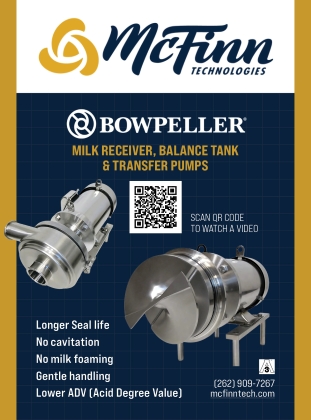Finalists Announced for 2025 NATDA Industry Excellence Awards

Finalists Announced for 2025 NATDA Industry Excellence Awards
Recipients will be selected by popular vote from the NATDA membership and revealed at the Trailer Tech Expo in Reno for their outstanding contributions to the trailer industry.
The North American Trailer Dealers Association (NATDA) and Trailer Tech Expo Powered by NATDA™ today announced the finalists for the 2025 Industry Excellence Awards, recognizing exceptional achievement across several award
The finalists were nominated by their peers and selected by the nominations committee comprised of trailer professionals across all sectors of the industry.
New in 2026! NATDA membership have
“These finalists represent the many of the very best of our industry—companies and individuals who are not only driving business excellence but pushing the boundaries of what’s possible in trailer manufacturing, sales, education and service,” said Andria Gibbon, CEM, Executive Director of NATDA. “From breakthrough innovations that are transforming how trailers are built and serviced, to the rising stars who are bringing fresh perspectives and energy, each finalist has demonstrated a commitment to raising industry standards.”
2025 NATDA Industry Excellence Awards Finalists
Manufacturer of the Year Award
-
Delco Trailers
-
Liberty Trailers
-
Load Trail
Vendor of the Year Award
-
Bulletproof Hitches, LLC
-
Taskmaster Components
-
TUFF WIRELESS
Dealer of the Year Award
-
Black River Outdoors
-
Happy Trailers
-
Spencer Trailers, Inc.
-
Wasatch Trailer Sales, Inc.
Rising Star Award (Individual)
-
Nathan Bryant, Sales, Delco Trailers
-
Tyler Greening, Purchasing Agent, Load Trail
-
William Ramirez, Sales, Huntley Motor World
Rising Star Award (Company)
-
Black River Outdoors – Multiple Locations
-
Hillcrest Trailers – Sweetwater, TN
-
NXG Truck Bodies – Mount Pleasant, TX
Community Impact Award – Charitable Giveback
-
Gus Beattie, Sales Manager, Knapheide Equipment Company
-
Kim Crabb, Co-Owner, Diamond C Trailers
-
Rod Hathaway, President, Maine Trailer Inc.
Customer Service Excellence Award
-
Delco Trailers
-
Diamond C Trailers
-
Load Trail
Women in Trailer Industry (WITI) Award – Woman of the Year
-
Vicky Mirsberger, Owner, Mirsberger Sales & Service, Inc.
-
Montana Smith, Social Media Manager, Texas Pride Trailers
-
Megan Swank, Owner, White Spruce Trailer Sales
Educational Excellence Award
-
Johnathan Aguero, SVP of Revenue, Blackpurl
-
Kent Lewis, Chief Evangelist, FreeGren Digital
-
Bill Snider, Product Training Manager, DEXTER
Lifetime Achievement Award (Vanguard)
-
George Fehr, Owner & Founder, Lamar Trailers
-
Mike Crabb, Co-Owner, Diamond C Trailers
-
John Dyck, CEO & Founder, Delco Trailers
The NATDA Industry Excellence Awards Banquet is a highlight of Trailer Tech Expo Powered by NATDA ™, taking place February 17-19, 2026, at the Reno-Sparks Convention Center. Winners will be revealed during a special awards banquet sponsored by Liberty Trailers on Wednesday, February 18, 2026, at the Trailer Tech Expo in Reno, Nevada. The event offers an immersive experience in trailer innovation and technology, featuring hands-on technician certification workshops, breakthrough solutions demonstrations, and exclusive networking opportunities with industry leaders.
For more information about the awards program or Trailer Tech Expo, visit https://www.natdatrailershow.
ABOUT NATDA™
The North American Trailer Dealers Association (NATDA) is the leading trade association
representing trailer dealers, manufacturers, and suppliers across North America. NATDA is
dedicated to advancing the trailer industry through education, advocacy, networking, and
recognition of excellence.
ABOUT TRAILER TECH EXPO POWERED BY NATDA™
Taking place at the Reno-Sparks Convention Center from February 17-19, Trailer Tech Expo
offers an immersive experience in all things trailer innovation and technology. Discover
new ways to accelerate dealership performance, get hands-on with technician
certification workshops, test breakthrough solutions, meet the experts, and gain access to
exclusive networking opportunities with industry leaders who are reshaping the future of
trailer sales, service, and technology.



